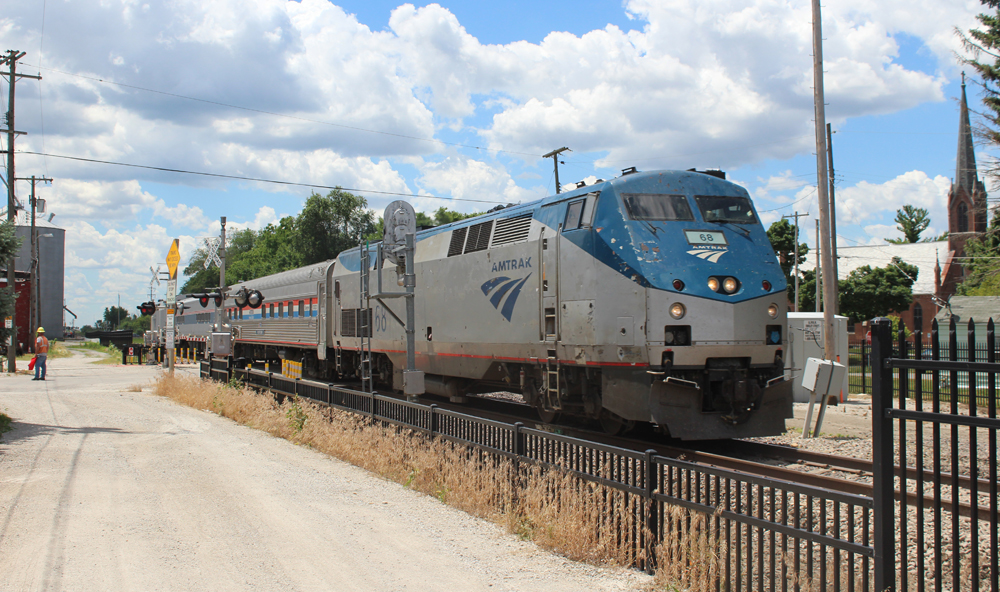Chicago-St. Louis trains begin 110-mph running
By Bob Johnston | May 3, 2023
Schedules to be shortened to reflect higher speed at a later date

An Amtrak test train speeds through Chenoa, Ill., during 90-mph testing on June 25, 2020. Speeds were first raised to 90 mph before separate tests recently certified Wabtec’s IETMS positive train control system for 110 mph. Bob Johnston
CHICAGO — Starting today, Amtrak’s
Lincoln Service trains will begin operating at 110-mph maximum speeds over Union Pacific’s former Gulf, Mobile & Ohio speedway between Laraway Road, south of Joliet, Ill., and the Alton, Ill., Amtrak station. ... Shortened schedules will be established at a later time “to ensure everything on the system is running properly and to monitor the actual travel time between stations,” says John Oimoen, Illinois Department of Transportation deputy director, rails.
The state and federal investment in Chicago-St. Louis corridor speed increases has totaled about $2 billion over more than 20 years. Infrastructure upgrades include installation of four-quadrant crossing gates, fencing in populated areas, complete roadbed rehabilitation, and installation of more passing sidings with high speed turnouts.
Reaching the upgraded corridor’s design speed has been a struggle, primarily because finding a functional train control signal system has been elusive. Trains first reached 100 mph north of Springfield, Ill., during a 2002 media demonstration, and 110 mph over a short stretch of track south of Bloomington-Normal, Ill., beginning in 2015, but neither of those systems proved to be reliable.
The current installation, Wabtec’s I-ETMS positive train control system, has required more than three years of Federal Railroad Administration certification testing. Speeds were first raised to 90 mph following tests in 2020 and 2021, and recently to 110 mph after a similar round of tests. A unique component in the Illinois corridor’s PTC installation is an overlay of Alstom’s Incremental Train Control System, which monitors approaching highway grade crossings for obstructions.
Chicago-St. Louis trains use Canadian National tracks between the Windy City and Joliet, where maximum speeds are 79 mph. Union Pacific and Terminal Railroad Association of St. Louis trackage limits south of Alton are also 79 mph, but both of those segments have numerous speed restrictions.
{snip}
